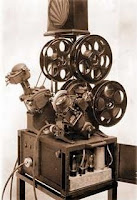Film & TV Editing
Editing is a part of post production; it involves putting together different shots and making one large sequence. An editor’s role is to collect footage and assemble them together, this job can be challenging as this task requires the editor to put these shots together in a way that the audience cannot tell they have been edited. Editing involves working with video clips, sound and still images and they must all be placed in a sequence with excellent continuity.
Continuity is when a series of shots are put together and ‘flow’ the audience cannot physically tell that different clips are used, continuity simple looks like the camera has changed angle. For example coverage of a live sports event is an example of continuous footage.
There are three stages of editing:
1. Editors cut
2. Directors cut
3. Final cut
Editors Cut
The editors cut is the first version of a show or film. the editor will put together a sequence that is normally much longer than what the end sequence will be. After this important creative decision need to be made with this cut. then a team will look at the continuity, balance of the story and then trim or delete scenes.
Directors Cut
The directors cut in a version of the video that the directors has overseen the editing of, it normally means that it is the version the directors likes but this version is never really final or ready for release.
Final Cut
The final cut is the version that has been looked at by the directors and is then past on to the producer(s) who will then make any changes they think are necessary, the producers are there to represent the studio to make sure the final cut is the best version.
The Principles of Editing
there are seven main principles to consider when editing, these are:
- Continuity
- Make the edit invisible
- There should be a motivation for every edit
- Bear audio in mind
- Editing in creating
- Don't overuse technique or visual effect
History of Editing
The first way of editng film was with a positive copy of the film negative called a film workprint. This was done by actually cutting and pasting different bits of footage, this was done using a splicer and threading the film on a machine with a viewer such as a moviola.

No comments:
Post a Comment